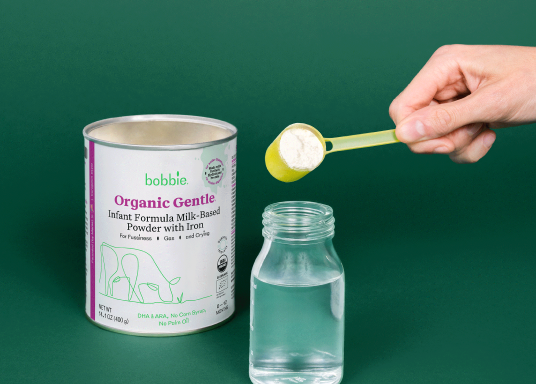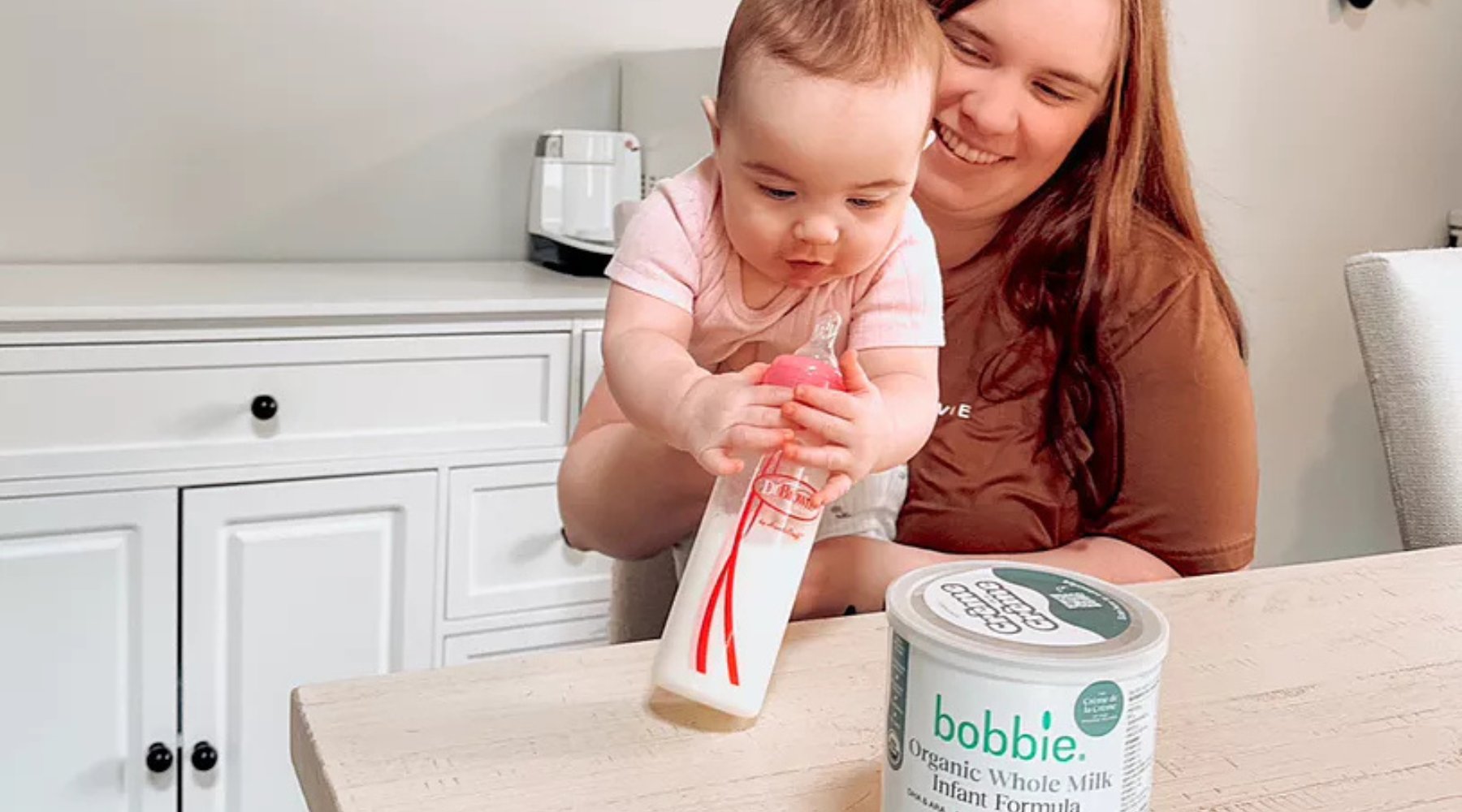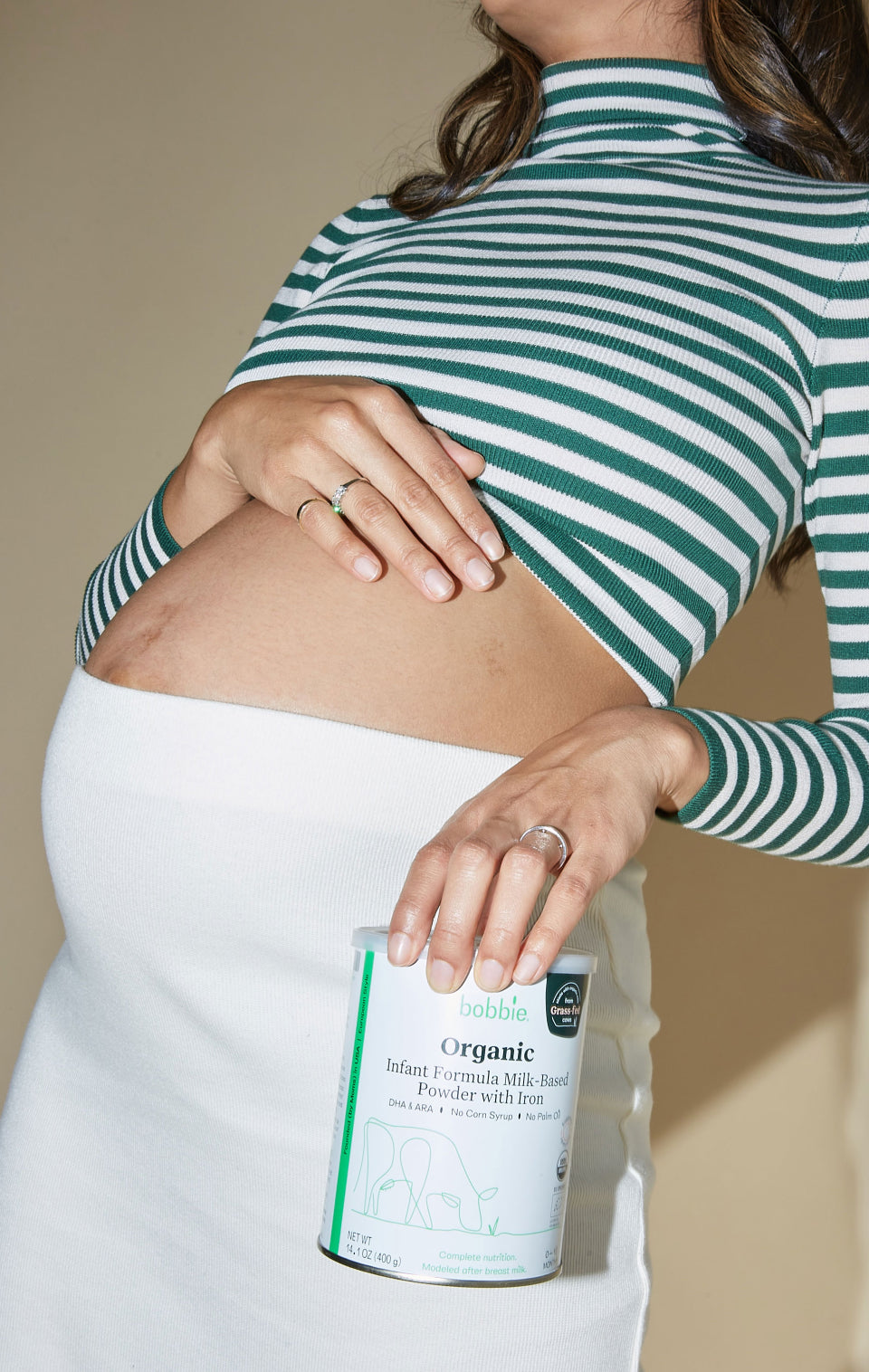Published April 28, 2025
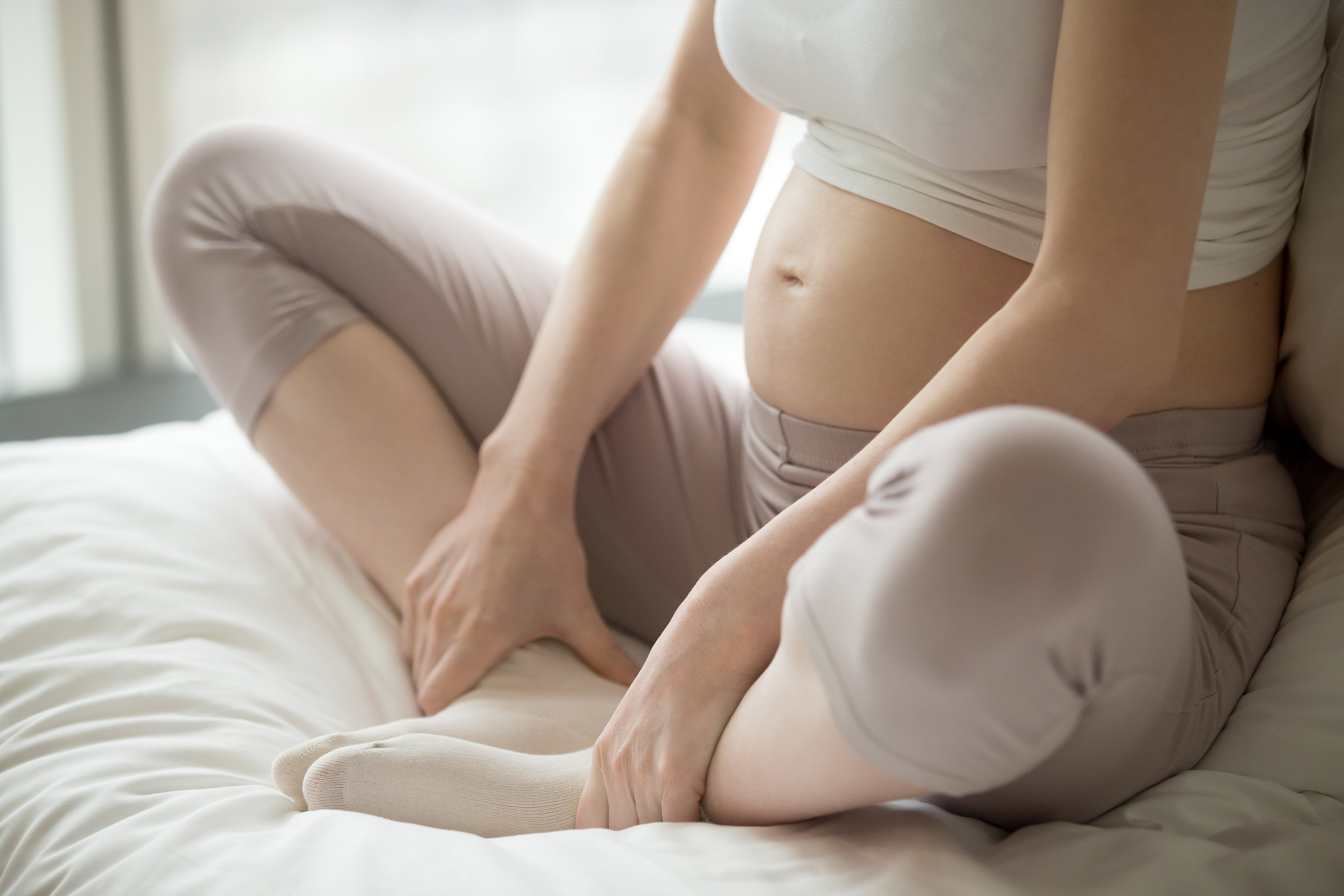
How To Alleviate Pain With Pregnancy Hip Stretches
If you’re pregnant and dealing with hip pain — you’re not alone!
Hip and pelvic discomfort are incredibly common during pregnancy, especially as your body grows, shifts and preps for the arrival of your little one. While it can be uncomfortable (and sometimes downright frustrating), there’s good news: gentle, intentional stretching can go a long way in helping you feel more comfortable, mobile and confident as you move through each trimester.
In this blog, we’ll explore why hip pain happens during pregnancy, the best pregnancy hip stretches to ease tension and build strength and how to make stretching a daily wellness ritual. Whether you're stretching for pain relief, flexibility or birth prep, this guide is here to help you feel more at home in your changing body.
Why Your Hips Hurt During Pregnancy
Let’s start with the big question: why does hip pain happen during pregnancy in the first place?
Your Body Is Changing — A Lot
As your pregnancy progresses, your body undergoes a cascade of changes that impact your joints, posture and muscle function. One of the biggest players? Relaxin, a pregnancy hormone that helps soften ligaments and joints in preparation for birth. While this is super helpful for delivery, it can also create instability in the hips and pelvis — especially in the second and third trimesters.
With your growing belly, shifting center of gravity and added weight on the pelvic floor, hip joints and lower back, it’s no wonder your hips are feeling the pressure.
Common Causes of Pregnancy Hip Pain
Several factors can contribute to hip discomfort during pregnancy — and most of them are totally normal. Here’s a closer look at what’s going on behind the scenes as your body adapts to support your growing baby:
-
Hormonal shifts: Relaxin loosens joints, which can affect hip stability.
-
Postural changes: A growing belly shifts your posture and places extra strain on the lower back and hips.
-
Weight distribution: More weight means more pressure on the hip flexors, glutes, knees and abdominal muscles.
-
Muscle imbalances: Tight hips and weakened glutes or pelvic floor muscles can contribute to tension and pain.


Your go-to resource for all things new baby.
Sign up to get the scoop on feeding, sleep, poop, and so much more.
By singing up for email, you are to receive marketing emails from Bobbie and can manage your email preferences or unsubscribe at anytime
Why Hip Stretches Help
Gentle hip stretches during pregnancy can:
-
Support pelvic alignment and flexibility
-
Reduce pressure on the lower back, left leg and hips
-
Boost circulation and relieve muscle tension
-
Encourage better posture and balance
-
Help prepare the body for a smoother birth experience
Gentle Pregnancy Hip Stretches for Comfort and Strength
Stretching isn’t just about physical relief — it’s also an amazing way to slow down, connect with your body and prepare mentally and emotionally for birth. Here are some of the best pregnancy hip stretches to try at home.
Before you begin: Always check with your OB-GYN or prenatal physical therapist before starting a new movement routine. Stretch gently, breathe deeply and never push through pain. If any of these poses feel uncomfortable, do not continue with them.
1. Prenatal Pigeon Pose
What it does: Opens glutes and deep hip rotators
How to do it: Sit with one leg bent in front and the other extended behind. Support your belly and hips with a bolster or blanket.
Tip: Use a yoga block or pillow under your front hip for extra support.
2. Butterfly Stretch
What it does: Gently opens inner thighs and hips
How to do it: Sit on a yoga mat, bring the soles of your feet together and let your knees fall outward. Hold your feet with your hands.
Modification: Sit on a folded blanket to support your lower back.
3. Child’s Pose
What it does: Offers back and hip relief
How to do it: Kneel and sit back on your heels, reaching your arms forward. Place a pillow under your belly for support.
Tip: Breathe into your low back and pelvis.
4. Hip Flexor Stretch (Low Lunge)
What it does: Stretches the front of the hip and pelvis
How to do it: Step one foot forward into a lunge. Gently sink into the stretch.
Support: Use a chair or wall for balance.
5. Supported Squats
What it does: Deepens hip opening and strengthens thighs
How to do it: Stand with feet wide, squat down slowly while holding onto a wall or sturdy surface.
Tip: Place a pillow under your left foot or heels if needed.
6. Side Lunges
What it does: Targets inner thighs and outer hips
How to do it: Step into a wide stance, shift weight from side to side, gently bending one knee at a time.
Support: Hold onto a chair or yoga block for stability.
7. Hip Rotations
What it does: Mobilizes tight hips and boosts circulation
How to do it: In a seated position or on all fours, slowly circle your hips in one direction, then the other.
Tip: Pair with deep breathing for a meditative moment.
8. Seated Figure Four Stretch
What it does: Opens hips while seated
How to do it: Sit on the floor or chair, cross one ankle over the opposite knee and gently press the knee down.
Modification: Sit upright with a tall spine and use a pillow for extra cushion.
9. Deep Supported Squat
What it does: Opens the pelvis and promotes birth prep
How to do it: Use a wall, pillow or yoga block to support you as you squat deeply.
Tip: Breathe into the pelvic floor and let gravity do the work.
Making Hip Stretches a Daily Ritual
Building a daily stretching practice doesn’t need to be complicated. In fact, just five to 10 minutes a day can bring real relief and help you feel more grounded in your pregnancy journey.
Daily Stretching Tips
-
Pick a time that works for you: Morning stretches can wake up your body, while evening stretches help with sleep and muscle tension.
-
Create a calming vibe: Dim the lights, play gentle music and use a cozy yoga mat or soft rug.
-
Pair with breathing: Try gentle breathing exercises like inhaling through your nose and exhaling through your mouth.
-
Set realistic goals: Consistency is more important than intensity.
-
Be kind to your body: Use props, modify when needed and skip stretches that don’t feel right.
Safety First
-
No stretch should ever feel painful
-
Hold each stretch for 20–30 seconds
-
Avoid overstretching — especially as joints loosen with relaxin
-
Rest days are okay (and encouraged!)
If you’re experiencing sharp pain, radiating discomfort or pain that worsens with movement, it may be time to check in with your care provider. Common conditions like pelvic girdle pain, sciatic pain or round ligament pain can benefit from professional support, including prenatal physical therapy.
Looking for tools to support your routine? Check out the best apps for new and expecting moms for help tracking movement, sleep and more.
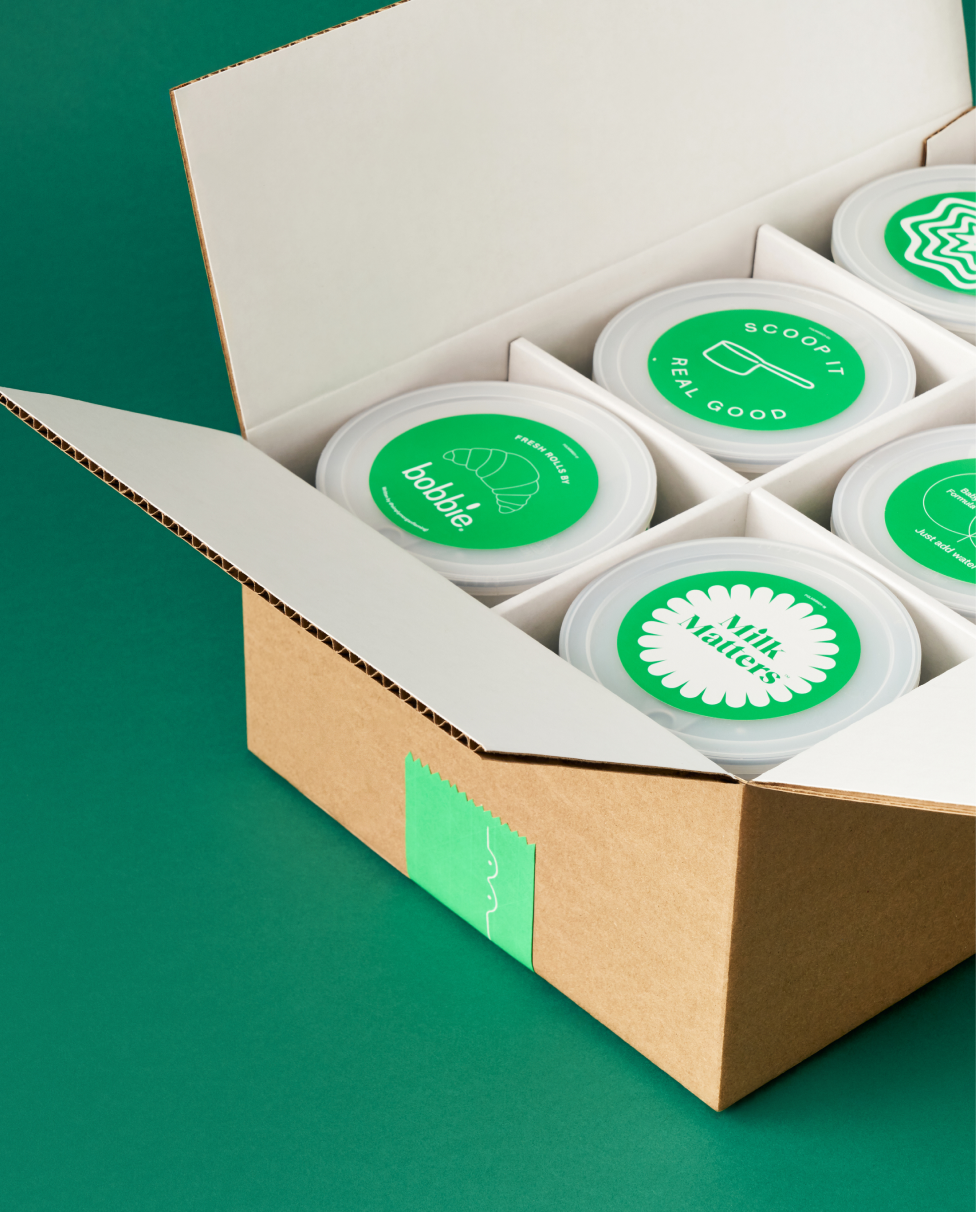
Shop Bobbie Organic Infant Formula
Bobbie Organic Infant Formula is a USDA Organic, EU-style infant formula that meets all FDA requirements. It is a complete nutrition milk-based powder modeled after breast milk and is easy on tummies. It is non-GMO and doesn't have corn syrup, palm oil, or maltodextrin. Shop Bobbie today!

Pregnancy Hip Stretch FAQs
Is it safe to stretch your hips during all trimesters of pregnancy?
Yes — with modifications. Always listen to your body and check with your provider.
What prenatal exercises complement hip stretches?
Walking, swimming, prenatal yoga and pelvic floor exercises all support lower body strength and mobility.
What positions should I avoid while stretching?
Avoid lying flat on your back after the first trimester and any stretch that causes strain, especially in the left knee, right leg or lower back.
Are there stretches I can do sitting down or while on bed rest?
Yes! The seated figure four, butterfly and gentle hip rotations can all be done while seated or reclining.
Can stretching help with round ligament pain?
Stretching can help relieve tension and promote relaxation, but targeted care from a provider is best for persistent pain.
Will hip stretches help after childbirth, too?
Absolutely. They can ease postpartum tightness and support your return to gentle movement.
Supporting Your Body, One Stretch at a Time
Pregnancy comes with so many changes — some amazing, some challenging, all completely human. When your hips ache or your posture starts to shift, stretching is one of the simplest, most nurturing things you can do for yourself.
By focusing on mobility, mindfulness and small moments of care, you’re not just prepping for birth — you’re also tuning into your body in the most beautiful way.
At Bobbie, we’re here to support your journey through every stage — from those first flutters of pregnancy to the early days of parenthood. Whether you’re looking for gentle wellness tips or a Clean Label Project-certified organic infant formula you can trust, we’ve got you covered.
Explore our parenthood resources and shop Bobbie formula — because feeling supported matters, for you and your baby!
The content on this site is for informational purposes only and not intended to be a substitute for professional medical advice, diagnosis or treatment. Discuss any health or feeding concerns with your infant’s pediatrician. Never disregard professional medical advice or delay it based on the content on this page.







